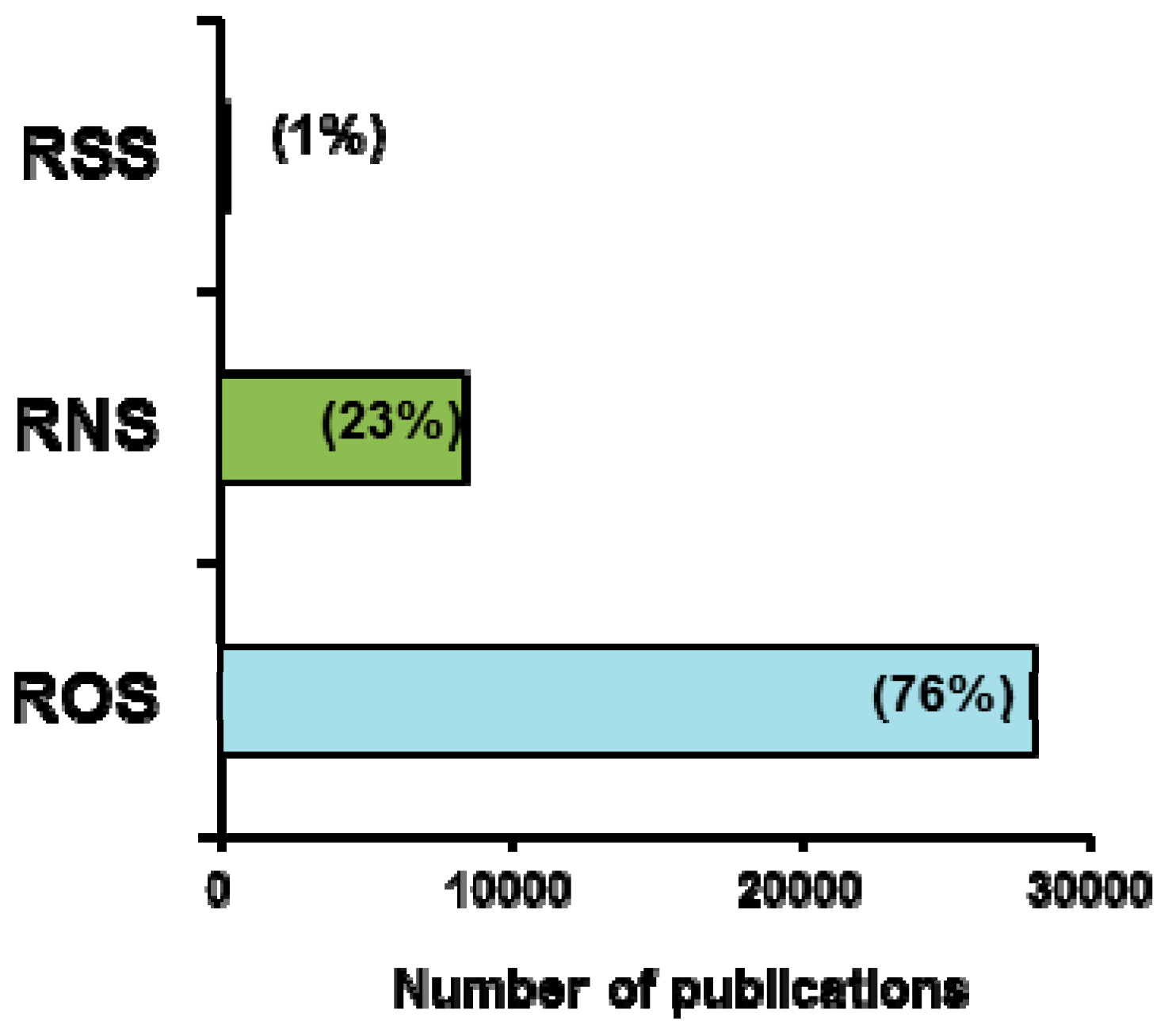Nitric Oxide and Hydrogen Sulfide in Higher Plants under Physiological and Stress Conditions
Funding
Conflicts of Interest
References
- Yamasaki, H.; Cohen, M.F. Biological consilience of hydrogen sulfide and nitric oxide in plants: Gases of primordial earth linking plant, microbial and animal physiologies. Nitric Oxide 2016, 55, 91–100. [Google Scholar] [CrossRef] [PubMed]
- Fancy, N.N.; Bahlmann, A.K.; Loake, G.J. Nitric oxide function in plant abiotic stress. Plant Cell Environ. 2017, 40, 462–472. [Google Scholar] [CrossRef] [PubMed]
- Corpas, F.J.; González-Gordo, S.; Cañas, A.; Palma, J.M. Nitric oxide and hydrogen sulfide in plants: which comes first? J. Exp. Bot. 2019, 70, 4391–4404. [Google Scholar] [CrossRef] [PubMed]
- Corpas, F.J. Hydrogen sulfide: A new warrior against abiotic stress. Trends Plant Sci. 2019. [Google Scholar] [CrossRef] [PubMed]
- Begara-Morales, J.C.; Sánchez-Calvo, B.; Chaki, M.; Valderrama, R.; Mata-Pérez, C.; Padilla, M.N.; Corpas, F.J.; Barroso, J.B. Antioxidant systems are regulated by nitric oxide-mediated post-translational modifications (NO-PTMs). Front Plant Sci. 2016, 7, 152. [Google Scholar] [CrossRef] [PubMed]
- Asgher, M.; Per, T.S.; Masood, A.; Fatma, M.; Freschi, L.; Corpas, F.J.; Khan, N.A. Nitric oxide signaling and its crosstalk with other plant growth regulators in plant responses to abiotic stress. Environ. Sci. Pollut. Res. Int. 2017, 24, 2273–2285. [Google Scholar] [CrossRef] [PubMed]
- Aroca, A.; Gotor, C.; Romero, L.C. Hydrogen sulfide signaling in plants: emerging roles of protein persulfidation. Front Plant Sci. 2018, 9, 1369. [Google Scholar] [CrossRef] [PubMed]
- Kolbert, Z.; Feigl, G.; Freschi, L.; Poór, P. Gasotransmitters in Action: Nitric oxide-ethylene crosstalk during plant growth and abiotic stress responses. Antioxidants (Basel) 2019, 8, 167. [Google Scholar] [CrossRef] [PubMed]
- Fukudome, M.; Watanabe, E.; Osuki, K.I.; Uchi, N.; Uchiumi, T. Ectopic or over-expression of class 1 phytoglobin genes confers flooding tolerance to the root nodules of Lotus japonicus by scavenging nitric Oxide. Antioxidants (Basel) 2019, 8, 206. [Google Scholar] [CrossRef] [PubMed]
- Yamasaki, H.; Ogura, M.P.; Kingjoe, K.A.; Cohen, M.F. D-Cysteine-induced rapid root abscission in the water fern Azolla pinnata: Implications for the linkage between D-amino acid and Reactive Sulfur Species (RSS) in plant environmental responses. Antioxidants (Basel) 2019, 8, 411. [Google Scholar] [CrossRef] [PubMed]
- Chu-Puga, Á.; González-Gordo, S.; Rodríguez-Ruiz, M.; Palma, J.M.; Corpas, F.J. NADPH oxidase (Rboh) activity is up regulated during sweet pepper (Capsicum annuum L.) fruit ripening. Antioxidants (Basel) 2019, 8, 9. [Google Scholar] [CrossRef] [PubMed]
- Rodríguez-Ruiz, M.; González-Gordo, S.; Cañas, A.; Campos, M.J.; Paradela, A.; Corpas, F.J.; Palma, J.M. Sweet Pepper (Capsicum annuum L.) fruits contain an atypical peroxisomal catalase that is modulated by Reactive Oxygen and Nitrogen Species. Antioxidants (Basel) 2019, 8, 374. [Google Scholar]
- Lokesh, V.; Manjunatha, G.; Hegde, N.S.; Bulle, M.; Puthusseri, B.; Gupta, K.J.; Neelwarne, B. Polyamine induction in postharvest banana fruits in response to NO donor SNP occurs via L-arginine mediated pathway and not via competitive diversion of S-adenosyl-l-methionine. Antioxidants (Basel) 2019, 8, 358. [Google Scholar] [CrossRef] [PubMed]
- Geng, B.; Huang, D.; Zhu, S. Regulation of Hydrogen sulfide metabolism by nitric oxide inhibitors and the quality of peaches during cold storage. Antioxidants (Basel) 2019, 8, 401. [Google Scholar] [CrossRef] [PubMed]

© 2019 by the author. Licensee MDPI, Basel, Switzerland. This article is an open access article distributed under the terms and conditions of the Creative Commons Attribution (CC BY) license (http://creativecommons.org/licenses/by/4.0/).
Share and Cite
Corpas, F.J. Nitric Oxide and Hydrogen Sulfide in Higher Plants under Physiological and Stress Conditions. Antioxidants 2019, 8, 457. https://doi.org/10.3390/antiox8100457
Corpas FJ. Nitric Oxide and Hydrogen Sulfide in Higher Plants under Physiological and Stress Conditions. Antioxidants. 2019; 8(10):457. https://doi.org/10.3390/antiox8100457
Chicago/Turabian StyleCorpas, Francisco J. 2019. "Nitric Oxide and Hydrogen Sulfide in Higher Plants under Physiological and Stress Conditions" Antioxidants 8, no. 10: 457. https://doi.org/10.3390/antiox8100457
APA StyleCorpas, F. J. (2019). Nitric Oxide and Hydrogen Sulfide in Higher Plants under Physiological and Stress Conditions. Antioxidants, 8(10), 457. https://doi.org/10.3390/antiox8100457




